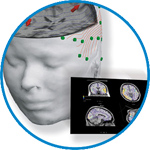- Home
- About ANT
-
Products

asa
asa is a highly flexible EEG/ERP and MEG analysis package with a variety of source reconstruction, signal analysis and MRI processing features.
.jpg)
eego mylab
The new frontier in multimodal brain research. With up to 16 kHz sampling rate, 256 EEG channels and unique software features, eego mylab gives you an unprecedented in-depth understanding of the human brain.

eego sports
eego sports offers complete freedom to collect high-density EEG data, bipolar EMG signals, and a variety of physiological sensor data, wherever and whenever required, with publish quality data in less than 15 minutes!

waveguard net
The waveguard net sets a new standard for research applications requiring high-density EEG data acquisition with quick preparation time, high flexibility, and subject comfort.

visor2
Our new and upgraded visor2 solutions integrate all the latest technologies for navigated rTMS, dual-coil navigation support, EEG-TMS recordings and pre-surgical evaluation for the highest quality in research and clinical procedures.

powerMAG ANT
The PowerMAG ANT 100 rTMS stimulator is designed for the specific needs of high-end TMS applications. Powerful high-frequency TMS as well as high precise single pulse and repetitive pulse protocols are combined in one single device.

xensor
xensor offers the solution for digitization of 3D electrode positions. xensor takes care of the whole procedure; it records, visualizes and stores positions acquired with a dedicated digitizer.

waveguard original
waveguard original is the cap solution for EEG measurements compatible with fMRI, MEG and TMS system. Use of active shielding guarantees performance in even the most demanding environments.

waveguard connect
waveguard connect EEG caps are a perfect match for hospitals and institutes aiming at reliable EEG, maximum uptime and great patient comfort! For optimal signal quality, the electrodes are made of pure, solid tin.

waveguard touch
waveguard touch is a dry electrode EEG cap. The unique Ag/AgCl coated soft polymer electrodes provide stable, research-grade EEG signals while maintaining subject comfort. The combination of these innovative dry electrodes and the industry-leading waveguard cap makes waveguard touch the best solution for dry EEG.

smartmove
smartmove allows planning of a complete TMS session ahead by defining stimulation sites based on anatomical MRI information and functional information like fMRI, PET or EEG/MEG.
Stay - References
- Support
- Events
- News
- Contact Us
You are here
Classification of EEG signals reveals a focal aftereffect of 10 Hz motor cortex transcranial alternating current stimulation
Classification of EEG signals reveals a focal aftereffect of 10 Hz motor cortex transcranial alternating current stimulation
Transcranial alternating current stimulation (tACS) modulates oscillations in a frequency- and location-specific manner and affects cognitive and motor functions. This effect appears during stimulation as well as “offline,” following stimulation, presumably reflecting neuroplasticity. Whether tACS produces long-lasting aftereffects that are physiologically meaningful, is still of current debate. Thus, for tACS to serve as a reliable method for modulating activity within neural networks, it is important to first establish whether “offline” aftereffects are robust and reliable. In this study, we employed a novel machine-learning approach to detect signatures of neuroplasticity following 10-Hz tACS to two critical nodes of the motor network: left motor cortex (lMC) and right cerebellum (rCB). To this end, we trained a classifier to distinguish between signals following lMC-tACS, rCB-tACS, and sham. Our results demonstrate better classification of electroencephalography (EEG) signals in both theta (θ, 4–8 Hz) and alpha (α, 8–13 Hz) frequency bands to lMC-tACS compared with rCB-tACS/sham, at lMC-tACS stimulation location. Source reconstruction allocated these effects to premotor cortex. Stronger correlation between classification accuracies in θ and α in lMC-tACS suggested an association between θ and α efffects. Together these results suggest that EEG signals over premotor cortex contains unique signatures of neuroplasticity following 10-Hz motor cortex tACS.

 Read more
Read more.jpg)




